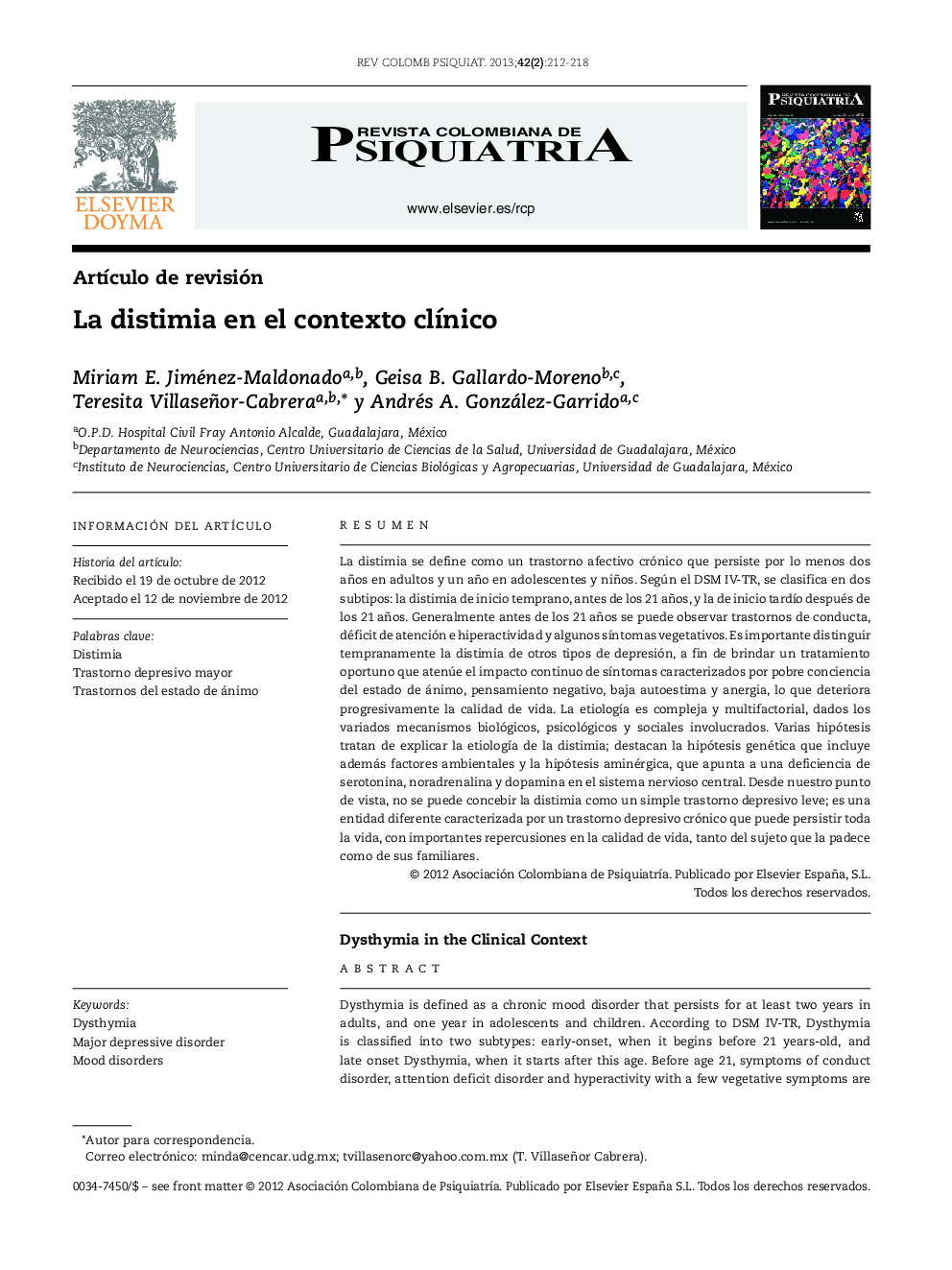| Article ID | Journal | Published Year | Pages | File Type |
|---|---|---|---|---|
| 4190740 | Revista Colombiana de Psiquiatría | 2013 | 7 Pages |
Abstract
Dysthymia is defined as a chronic mood disorder that persists for at least two years in adults, and one year in adolescents and children. According to DSM IV-TR, Dysthymia is classified into two subtypes: early-onset, when it begins before 21 years-old, and late onset Dysthymia, when it starts after this age. Before age 21, symptoms of conduct disorder, attention deficit disorder and hyperactivity with a few vegetative symptoms are usually present. It is important to distinguish it from other types of depression, as earlier as possible. This would allow providing these patients with the appropriate treatment to attenuate the impact of symptoms, such as poor awareness of self-mood, negative thinking, low self-esteem, and low energy for social and family activities, which progressively deteriorate their life quality. The etiology of Dysthymia is complex and multifactorial, given the various biological, psychological and social factors involved. Several hypotheses attempt to explain the etiology of Dysthymia, highlighting the genetic hypothesis, which also includes environmental factors, and an aminergic hypothesis suggesting a deficiency in serotonin, norepinephrine and dopamine in the central nervous system. From our point of view, dysthymia cannot be conceived as a simple mild depressive disorder. It is a distinct entity, characterized by a chronic depressive disorder which could persist throughout life, with important repercussions on the life quality of both patients and families.
Related Topics
Health Sciences
Medicine and Dentistry
Psychiatry and Mental Health
Authors
Miriam E. Jiménez-Maldonado, Geisa B. Gallardo-Moreno, Teresita Villaseñor-Cabrera, Andrés A. González-Garrido,
